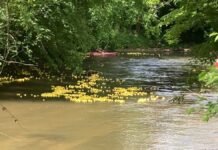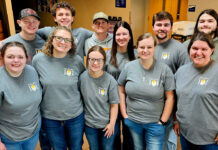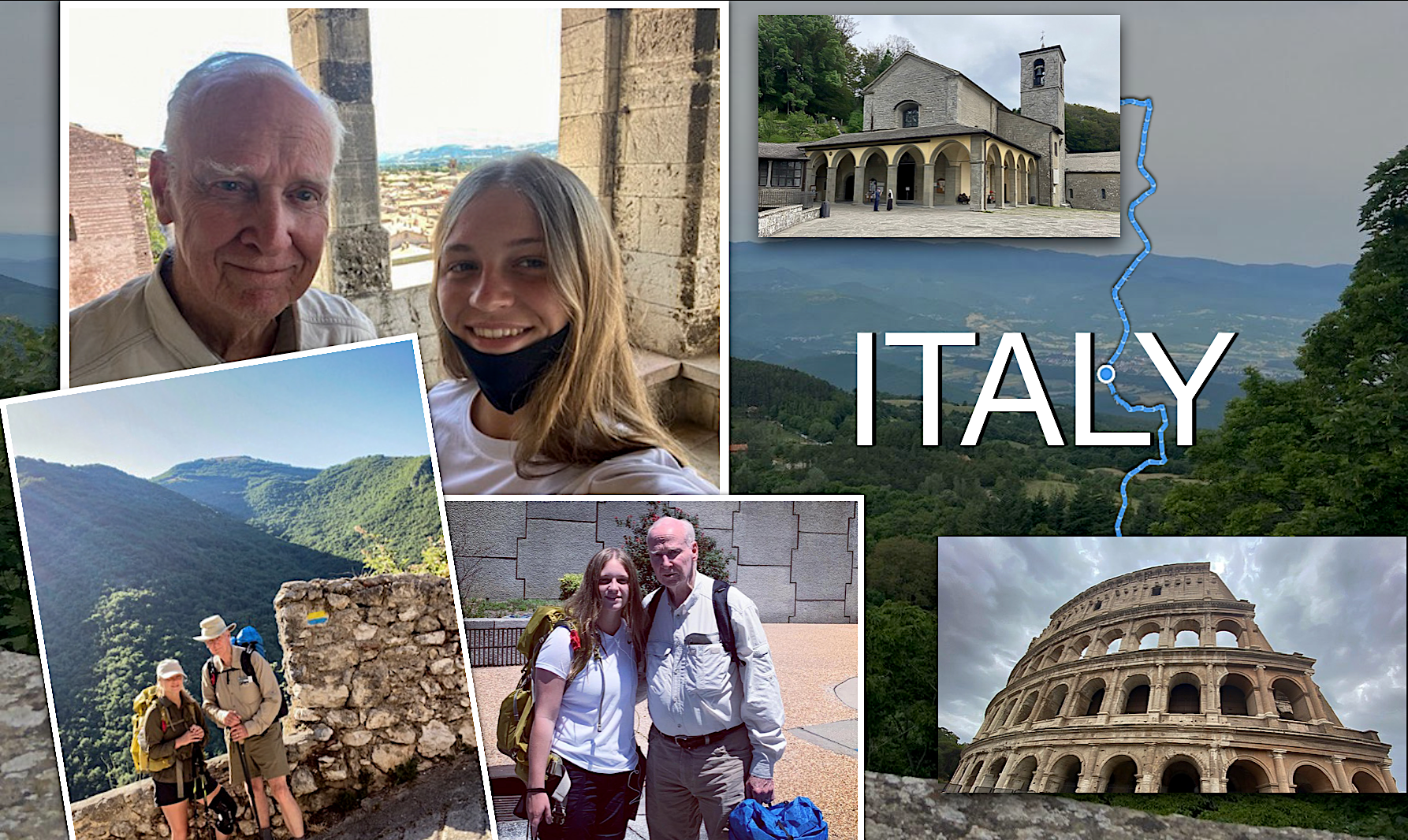
A few months ago, I invited my two oldest grandchildren to go on a hike with me. My grandson, unfortunately, had a conflict, but my sixteen-year-old granddaughter jumped on the opportunity. Then I told her it would be a 200-mile walk through the mountains of Italy. Without hesitation, Ella Jane said, “I’m in.” I chose this trek after reading an account of it by a photographer friend who had done it several years ago.
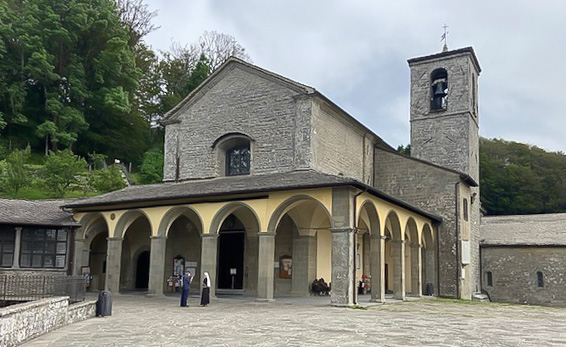
A little history: A Catholic frier from a hill town in Italy lived and preached a life of poverty. He believed that he should pattern his life as closely as he could to that of Jesus. Others began to follow him and his teachings. The trek we aimed to walk approximates the path taken by Francis and his first eleven followers from La Verna, Italy, to Rome in 1209 to seek permission from Pope Innocent III to establish a new religious order. Permission was granted and that branch of the Catholic church would, over the centuries, grow to enormous numbers – 17,000 members are in the U.S. alone. We are not Catholic, but all Christians can trace their religious heritage through Francis and his contemporaries. Appropriately, the walk is “The Way of St. Francis.”

Best laid plans
We would leave the U.S. in early May and return at the end of the month. That plan would put us in Italy in the spring; an excellent time of the year to avoid walking in the summer heat. But then, Covid happened and we were forced to start our one-month adventure in mid-June. Interestingly we were able to book a “Covid Free” flight from Atlanta to Rome. After rigorous Covid testing before leaving Atlanta and upon arrival in Rome we qualified to travel about Italy without having to quarantine. The Italian public, however, is serious about wearing masks. If you enter a building without your mask or with the mask too low, someone will let you know you should mend your ways.
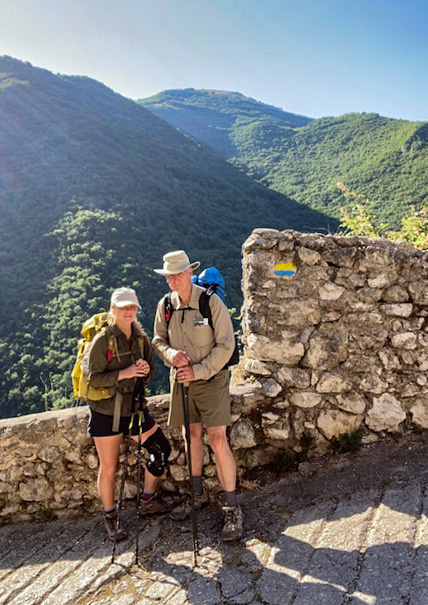
We were an unlikely crew; I’m eighty-one years old and sixteen-year-old Ella Jane was recovering from knee surgery. We both, however, took steps to prepare for day-after-day, twelve-mile mountain hikes. I had kept in reasonable shape and did numerous training hikes in the months before the Italy adventure. Ella Jane faithfully did her post-surgery rehab and gained the approval of her doctor (providing she wore her knee brace).
We spent a lot of time deciding what to take. We were not camping; every night would be in a B&B or small inn. On the one hand, there would be little opportunity to buy what we needed but didn’t have. Against that consideration was the weight issue. Clothes took up the most room in our packs, but the weightiest items were extra shoes. (The first thing we did each night after arriving at our B&B was to replace our hiking boots with more comfortable shoes.) Of course, we each had our personal kits. Electronics and charging supplies, though small, were weighty. Laundry soap, clothesline, sketchbook, and first aid kit rounded out the contents. We limited ourselves to a backpack base weight of fifteen pounds so that, with the day’s water and food, we would carry around twenty pounds.
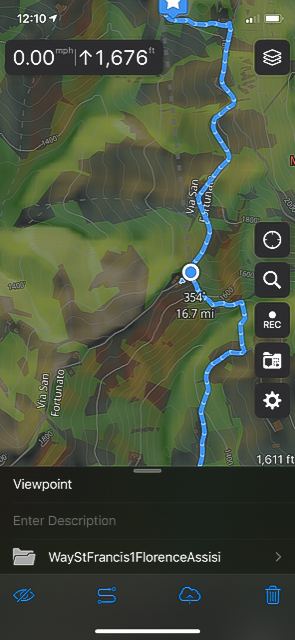

Carrying electronics? Teenagers, and, really, all of us, don’t leave home without their electronics. We each had a smartwatch to help us keep track of miles walked, heart rate, etc. And, of course, cell phones. We used them to call ahead to make sleeping arrangements and for our photography, but the most important use was as a tool to navigate the trail. We downloaded GPS tracks for the walk (available free from Cicerone Press – the publisher of our guidebook) and used them with Guru Maps Pro. The installation of all that was a bit tricky but absolutely worth it. The result is an image showing the trail as a blue line and our position as a blue dot. It wasn’t unusual for us to check our position dozens of times in the course of a day’s hike.
The first day was grueling! Our actual starting point was in the small Comune di Chiusi della Verna in Italy’s Tuscany Region. Getting there was the tough part. After waking at seven a.m. in Clarkesville, Georgia, it would be thirty hours of car, train, plane, and bus rides before we reached the welcome beds at our B&B in La Verna. We could have taken off some of the edge by sleeping on the ten-hour flight, but we were too keyed up – so we watched in-flight movies, instead.
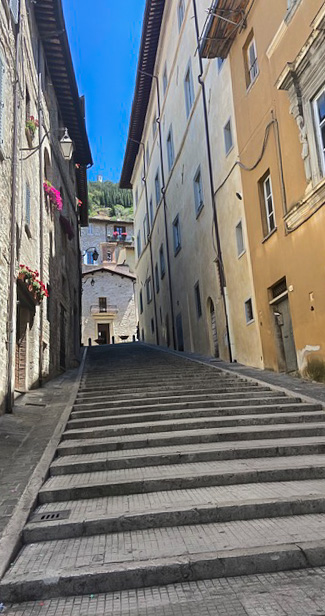
Journaling our journey
After arriving in Italy, Ella Jane and I were glad we planned a rest day before starting down the 200-mile trail to Rome. On that day we took an easy walk up to Saint Francis’ favorite place, the beech forest on Mount Penna. Now it is the location of the Santuario Francescano built in the fifteenth century as a memorial to St. Francis. And it was here that we got our first ‘stamp.’ Inked stamps, similar to a Notary Public impression, were available at many churches, B&B’s, and other spots along the way as a token for travelers to document their progress along the trail.
Also, on that first day, we began writing and sketching in our journals. Neither of us had journaled before this trip but it proved to be both satisfying and practical. At the end of each day’s hike, we would record our thoughts and make a sketch or two of things, or people, we found interesting that day. Ella Jane is a natural artist. I’m a color-blind photographer. I learned a lot from her, and I think my sketching got better as we made our way toward Rome.
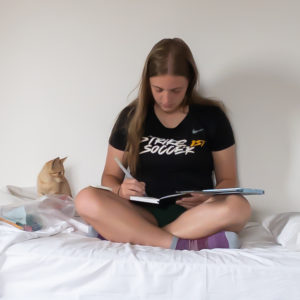
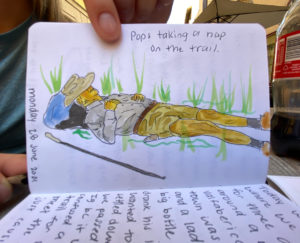
This trek follows the Apennines chain of mountains. Think of the Apennines as a backbone that runs the full length of Italy. In appearance, you could be looking at the Appalachians. In Tuscany and Umbria, where we were, the valleys and slopes to both sides make up the “breadbasket” of Italy – a lot of farmlands. But travel in the thirteenth century was from town to town and those towns were not in the valleys. Today we refer to them as hill towns.
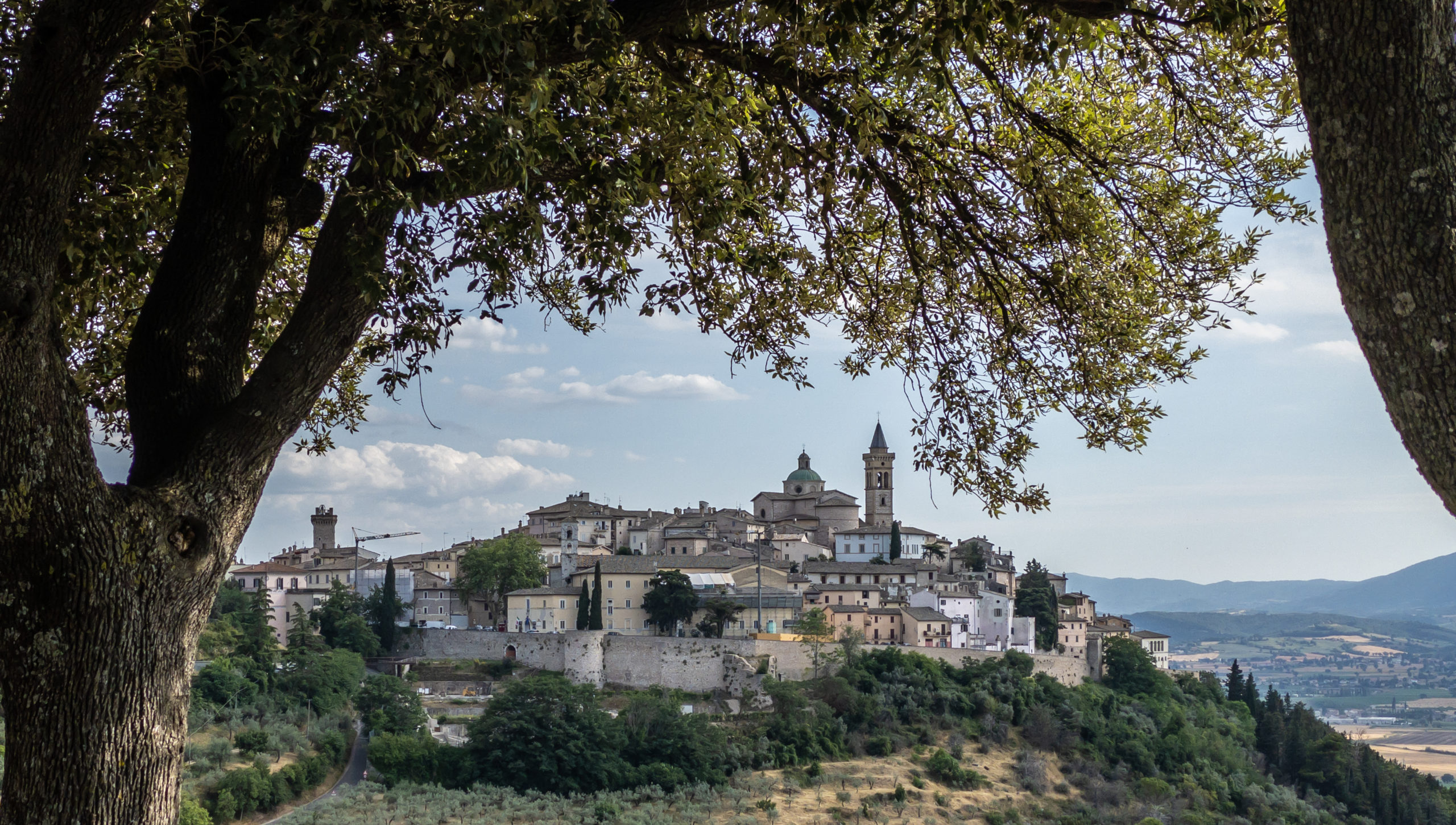
Two thousand or more years ago, the villages were walled and situated on hills for defensive purposes. (Italians weren’t always nice to each other.) We were an unlikely pair and were greeted with curiosity and courtesy as we walked into these villages and small towns. I wondered how Francis and his band of eleven ill-dressed followers were received on these same cobblestone streets.
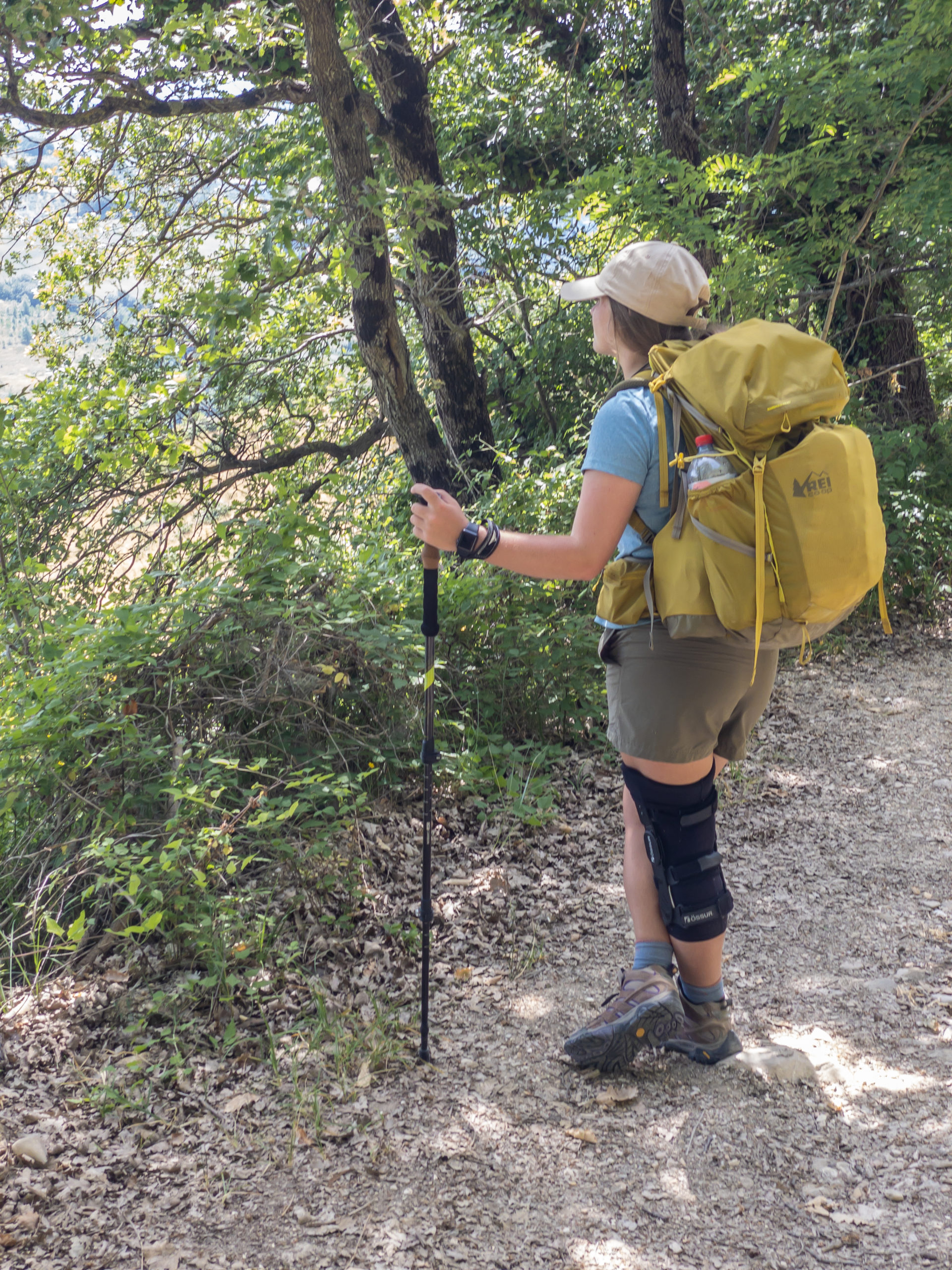

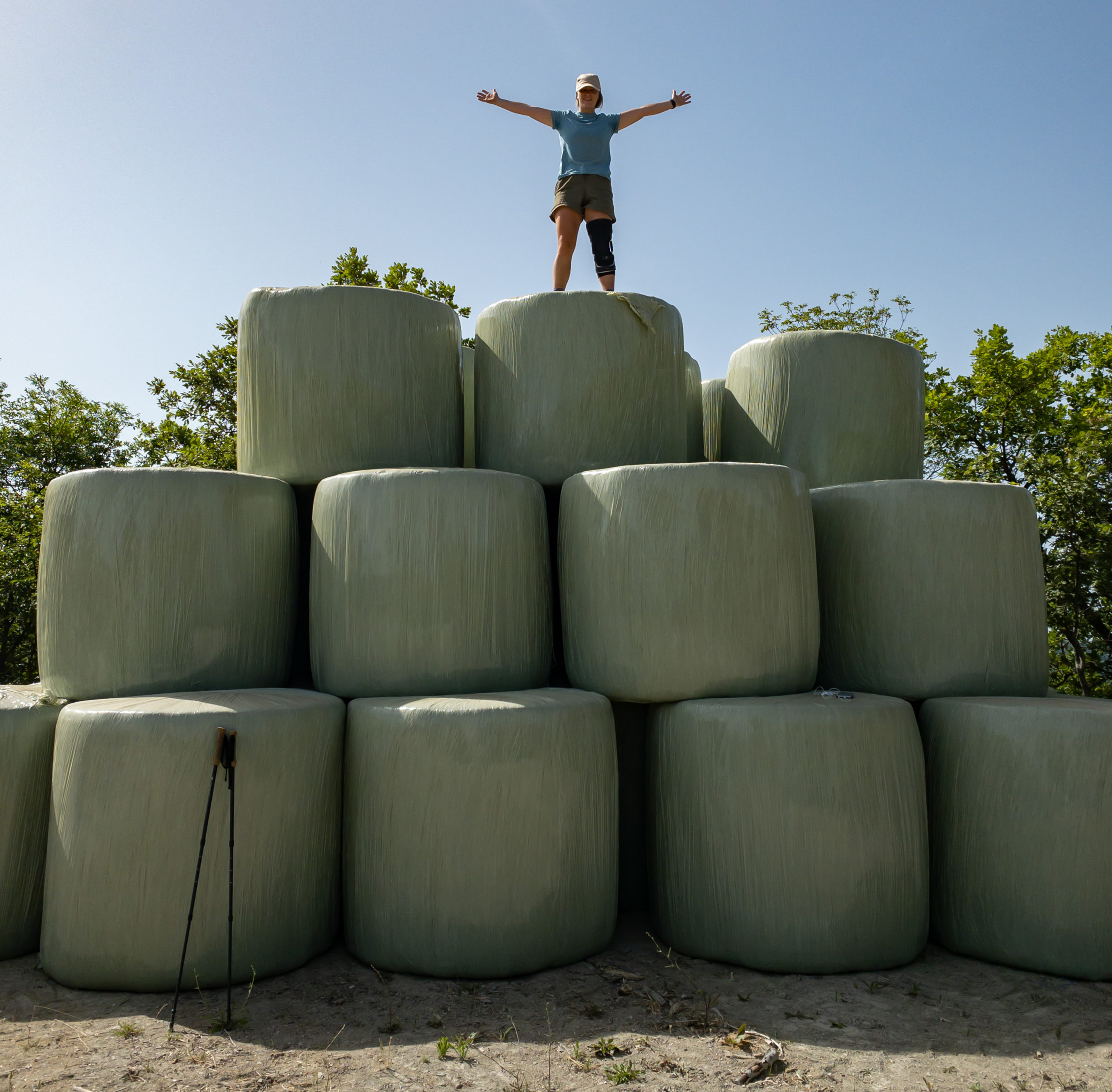
Because of Covid and our late-in-the-year start, there were very few other pilgrims on The Way of St. Francis. Our first encounter was a man from Milan who had walked – seven times – the Camino de Santiago, a trek of 500 miles from France into Spain. We met a dozen or so Italians and folks from other parts of Europe – two girls from Germany, and a couple from Great Britain.
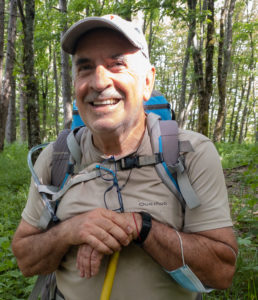
There were days we didn’t encounter anyone else on the trail.
I suppose this apparent lack of traffic was due, in part, to our all traveling in the same direction. We met no other Americans. Were we fearful? Not at all. Walking The Way was about as frightening as window shopping in Clarkesville.
Change of plans
A typical day’s hike started around 8:30 or 9:00 a.m., although we started earlier if the forecast was hot. We made sure to fill our water bottles to one or one and one-half liters – more if the day’s hike didn’t include villages where we might refill along the way. On two occasions early in the hike, we had to drink ditch water which we processed through a small, hand-held filter system designed specifically for hikers.
Most day’s walks took us along a mixture of mountain trails, dirt roads, and the occasional paved section as we approached a village. There were a few days where the terrain was relatively flat, but we’ll remember most the three days in which we climbed more than three thousand feet. That’s equivalent to climbing Mt. Yonah. Twice.
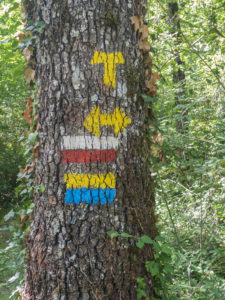
At the end of each day, we planned and prepared for the next day. An invaluable tool was a guidebook by a Methodist minister, Sandy Brown. The book contains detailed information for each of the nineteen segments we would walk – including color maps, trail information, lodging information (with phone numbers), and interesting facts about the places on the route that relate to St. Francis.
But plans don’t always work out.
The first bump in the road happened on the third day while walking to Citerna. I felt some pain on the bottom of my foot near the toes. Thinking that I had laced my boots too tight, I loosened both shoes. That, it turns out, was a big mistake. It allowed my foot to move around with each step and caused a huge blister. Ella Jane was nice enough to not mention that I had warned her – repeatedly – about how to avoid blisters. That blister sidelined us for two segments of the trek and was to cause me pain for the next one hundred miles. Who knew you could buy ibuprofen in family-size quantities?
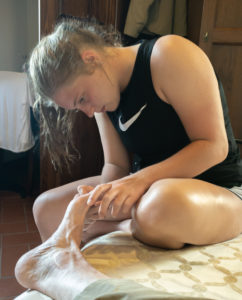
One long day became even longer when Ella Jane discovered that the water reservoir in her pack had sprung a leak – and soaked all her clothes. We backtracked several miles to the small hotel we had stayed in the night before and the owner dried Ella Jane’s clothes in her electric dryer. Good customer service. We walked seventeen and one-half miles that day.
Another unplanned-for event was the weather. We had walked several days in temperatures in the low 90’s and when we saw temperatures of 100, 100, and 102 forecast for the next three days we had a meeting. “Who thinks we should take a train around the next three segments?” Unanimous. The good news is that it gave us an extra day in the beautiful town of Spoleto and an extra day in Rome before flying home.
Culture and kindness
Watching the Italian people in their environment was fascinating to us. I had been to Italy three times before and knew what to expect, but this was culture immersion for Ella Jane. We loved watching the small groups that gather at the café for early morning coffee and the swapping of gossip – the conversations conducted in that beautiful language with arms waving and the practice of turning up the volume to better make one’s point.

We will always remember the many Italians who showed kindness to us. One day we had walked nine miles of a twelve-mile segment. The temperature was in the mid-nineties, we were out of water and had found no streams or irrigation ditches. An elderly lady (I should talk!) was sitting on a bench in the shade of a small church. In response to our “sign language” appeal for water, she began digging in her purse for her keys. We thought she was going to open the church for us, but she motioned for us to follow her to her car. She produced a one-liter bottle (cold!) of an orange drink and two plastic cups. No hesitation, no question. This woman exemplified the spirit of St. Francis – and we felt it.
The orange-drink lady was only one of many. Perfect strangers gave us their time when we were lost, confused, thirsty, needed a translator, or just needed help. Once we stopped at a pensione hoping to buy some water. The lady gave us cold watermelon. A young man – a fellow guest in a monastery – walked a mile out of his way to help us with a bus connection. A lady doing her morning walk helped us with a reservation when Italian was needed. Numerous people in Rome helped us make sense of the bus system (to the extent that was even possible).

Rewarding trip
Considering the segments not walked because of my blister and the super-heated days, we walked 133 miles of the 200-mile trek. We weren’t disappointed in not doing the full 200 miles. We learned to roll with what was handed to us. St. Francis and his early followers believed in “living in the present” and not worrying about the future. Well, maybe that isn’t totally practical in today’s world, but it worked for us as we laced up our boots each morning to resume our trek to Rome.
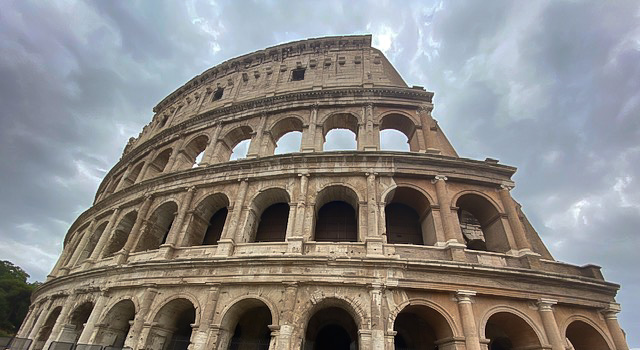
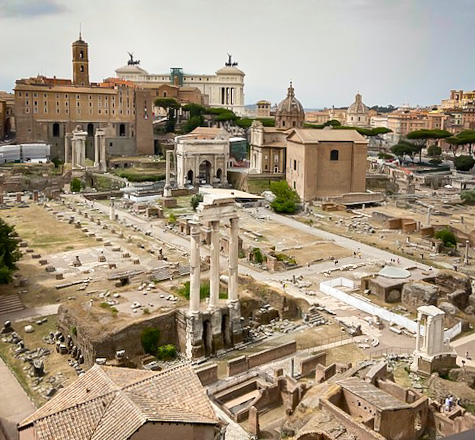

Rome, of course, is magical. It was noisy, however, to our North Georgia ears. We visited the must-see places, but the highlight was the Vatican Museum. The Sistine chapel, the Rafael rooms, the Pieta – the art is breathtaking! Personally, I think that Michelangelo’s Pieta is one of the greatest works of art ever created by mankind. Ella Jane was in her element – she seemed almost to communicate with the Renaissance portraits. And I must admit, seeing her absorb the art was rewarding to me.
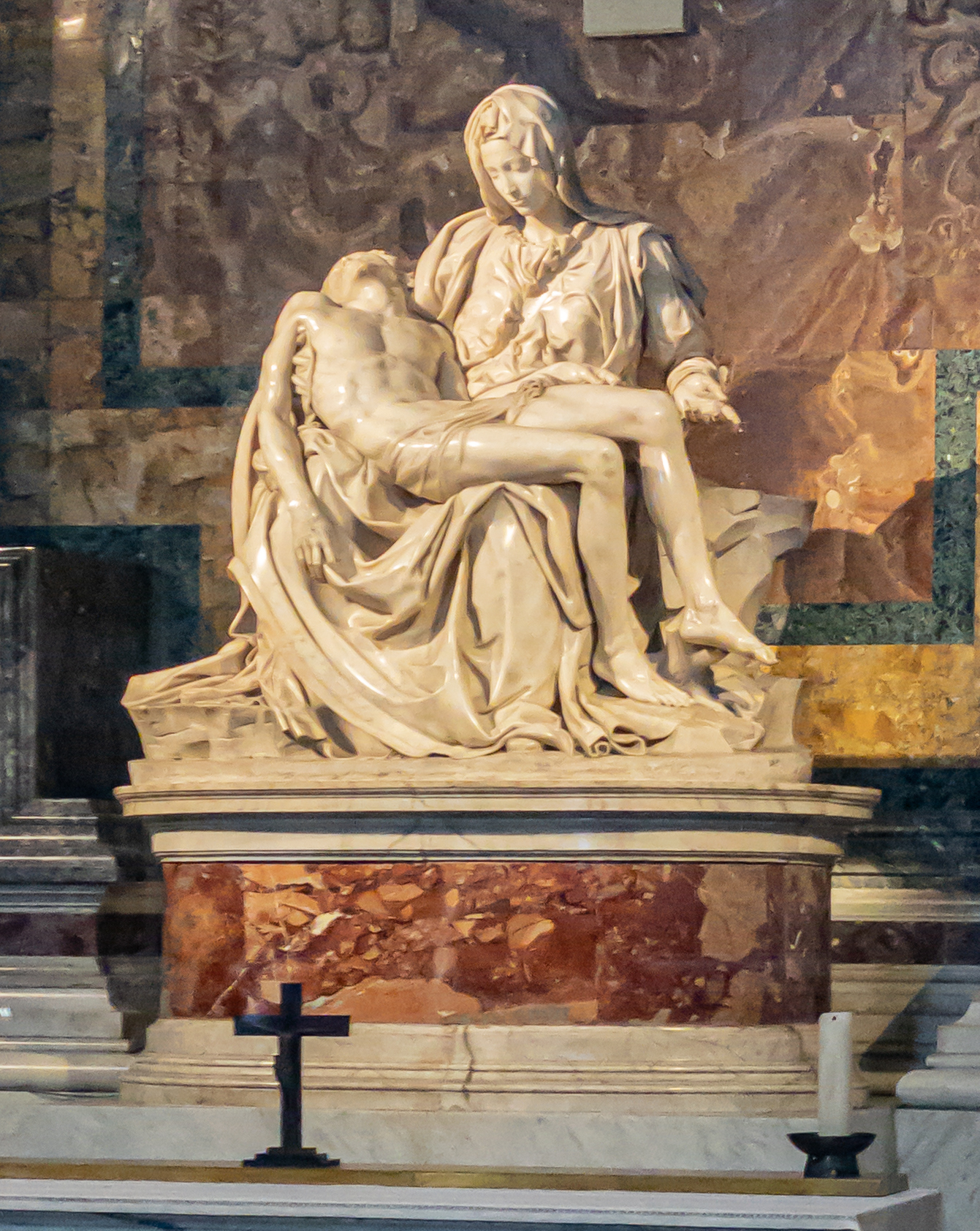
The entire trip was rewarding. After all, how often does an old guy like me get to go on an adventure like this? And to do it with his granddaughter? Of course, I’m grateful that at my age I was healthy enough to complete the trek. But I am particularly pleased with my travel partner. Ella Jane and I formed bonds rarely experienced by people separated by 75 years. And I think we both made good memories.
Author’s Note: I had the help of others who had walked The Way of St. Francis – mostly from the internet. Google “The Way of St. Francis” and you’ll get 311,000,000 results. 310,099,900 of those aren’t very informative but the other 100 are. The best-written source was “The Way of St Francis: Via Di Francesco: From Florence to Assisi and Rome” by Sandy Brown. It’s available from Amazon for $24.49. If you are serious about taking this walk, email me at [email protected] and I’ll share my experiences and tips with you.






